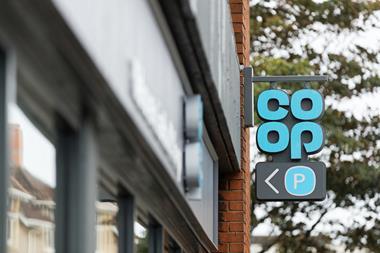Linda Williams isn’t happy with her biscuit fixture. In her and husband Dennis’ Premier store in Broadway, Edinburgh, she’s been looking at it and no matter which way she merchandises it, she thinks it just doesn’t look right.
“It’s impossible to keep the range steady with all the promotions and limited-edition variants being launched,” she explains. “It makes it difficult to keep on top of the category. As a result it looks messy and difficult to keep a core range in place.”
Despite the problems retailers like Linda are facing, biscuit sales haven’t crumbled in convenience.
Better biscuit sales
United Biscuits believes there is an £18m opportunity still to be unlocked from the biscuits category in the convenience sector. To help retailers take simple steps to drive growth, it has launched a website full of information relevant to the convenience channel.
As well as providing case studies and category advice, ‘Better Biscuits, Better Business’ recommends five simple steps to drive growth:
Stock the best-selling lines. Despite the growth opportunity, there is still a lack of awareness among retailers on which products they need to stock to achieve uplift in sales.
Make biscuits impossible to miss. Locate biscuits in high footfall areas at the front of store.
Draw shoppers to the biscuit feature. Make biscuit features attractive and easy to spot to have a positive impact not only on biscuit sales, but on other categories as shoppers are shown to spend more time in-store as a result.
Make prices easy to see. Most shoppers say price is a driving factor behind purchase in convenience, so this is key to customer retention.
Maximise impulse and events. During the wide range of cultural and seasonal events throughout the year, where possible, theme displays with POS material or decorations to draw shoppers’ attention.
Hena Chandarana, trade communications controller at UBUK, says it was a good 12 months for the category overall. “Performance in the biscuits category strengthened throughout the year in 2014, with sales value up 2.3% across convenience year to date,” she says. “Growth is being seen in forecourts, high street and multiple convenience stores.
“This clearly demonstrates an opportunity for all convenience outlets, including independents, to capitalise upon, with potential for further growth in the convenience channel. UK consumers are highly motivated to buy biscuits, so stocking the best-selling lines, and taking simple measures to maximise visibility in store, will help convenience retailers take advantage of this continuing trend.”
While the figures look good overall, not all areas of the biscuit category are faring well, with the category’s performance masked by the success of everyday treats.
Mondelez International trade communications manager Susan Nash concedes that some areas of the sector are doing better than others. “Sweet biscuits is the largest sub-category in biscuits, with everyday treats being the largest segment at £402.1m, and displaying the greatest growth at 2.9%.”
She points out that all segments are in decline with the exception of everyday treats, with chocolate biscuit bars and everyday biscuits suffering the biggest declines.
So it’s no wonder that manufacturers are investing in formats and flavours to lift poorer performers.
Linda doesn’t blame the manufacturers for how she sees the category, either; she thinks it’s down to how customers are shopping the fixture. “People are looking at promotions before they look at brands,” she says. “Customers used to have their favourite brands, but now they’re value driven and want the best deal.”
Burton’s Biscuit Company head of customer category management David Costello agrees that customers aren’t as brand loyal as they used to be. “Increased shopper promiscuity has come from the rise in popularity of the discounters and meant that brand loyalty is increasingly difficult to secure, with many convenience retailers unsure as to how best to merchandise the fixture and drive spend for ‘treatier’ brands,” he says.
Fox’s Biscuits category controller Julie Stevens says brands need to make the differences between cheap and value clearer to consumers. “A large proportion of the category is sold on deal, which can devalue brands and subsequent performance, so there needs to be a focus on what value really means to consumers as it’s not just about price,” she says.
Chandarana doesn’t see the promotional push going away anytime soon, however, and believes offering value helps independent retailers. “We expect to see a continued focus on promotions across all channels as value remains at the top of the consumer agenda and weekly food shop budgets continue to tighten for the majority of households,” she says.
“By offering strong value and focusing on core everyday biscuit brands, UB will continue to drive growth into the category and support sales for retailers. For example, with independents we will continue to offer pricemarked packs on a range of products, helping retailers to continue to build trust with shoppers and demonstrate best value in what are still challenging economic times for many.”
She adds that there won’t be any let-up in the amount of NPD launched to the market, either.
“Next year we expect to see continued new developments and innovation in pack formats that are tailored towards the consumer trend of little and often shopping habits,” says Chandarana.
“With squeezed budgets, a rise in smaller households and increased urban living, shoppers continue to choose more frequent, lower-cost trips. As a result, small basket shops and therefore visits to convenience stores are likely to increase. How manufacturers package up and price their products will be crucial to ensure the right formats are available to meet this trend and encourage purchase.”
How to crack the cake market at Easter
With all the focus on biscuits, it can be easy to overlook cakes. IRI data shows that 93% of UK households buy packaged cakes in a year and, on average, purchase 19 times within that period, providing a great opportunity in the category.
Premier Foods category marketing director of cake Phil Ellis says the category is buoyed during seasonal events with customers looking to treat themselves. “In an era when shoppers are focused on keeping tight control of everyday spending, making the most of national and seasonal events such as Easter is a great way for retailers to inspire shoppers and generate additional purchases,” he says.
He advises increasing off-shelf displays and ensuring big brands are stocked for the Easter period.
“Shoppers are more willing to buy treats during seasonal occasions, and with Easter falling two weeks earlier in 2015 on 2014 it is important that the availability of popular Easter products is high on the agenda,” says Ellis.
The top 10 branded Easter lines belong to Mr Kipling and Cadbury and together account for 80% of all cake sales throughout the Easter period.
Nash says that it is this NPD that is keeping the category growing. “Everyday treats is the largest sub-segment within total sweet biscuits, and it is offsetting some of the decline through category innovation,” she says.
“Offering relevant formats, exciting the consumer through NPD, and creating new occasions for the category will help to drive value and growth.”
Costello advises retailers looking to make the most of the biscuits category to avoid getting bogged down in price wars, but rather focus on why their shoppers are buying what they do, and concentrating on meeting that need.
“The secret here is not to try to compete on price on low-cost staples, but rather to focus on shopper missions to help differentiate convenience stores from big stores and discounters,” he says. “Focus on well-known and well-supported brands to drive added-value impulse purchases.”
Nash also believes that retailers should focus on the missions important to their shoppers and stock accordingly. “Time-poor consumers are seeking formats for consumption while on the go,” she says.
“Convenience is key - offering formats relevant to out-of-home eating occasions is driving growth for brands such as Belvita for an on-the-go breakfast, and Oreo, Barny and Ritz for snacking.”
High visibility for biscuits on the fixture is important to grab those after an on-the-go product, though. “Biscuits is an impulsive category, particularly when it comes to on-the-go biscuit snacking, so locating your range in a highly visible area is critical to driving sales,” Nash says.
Fox’s Stevens says there is a lot of clutter at the point of purchase, with consumers struggling to cut through the promotional noise to find what they really want. “NPD plays a major role, but merchandising flow/segmentation and visibility and in-store theatre (including promotions) play a major part in driving category growth for retailers,” she explains.
“Have a clear layout aligned to consumer need states and occasions, which will improve ease of shop and conversion at point of purchase.”
IN BRIEF
Mr Kipling range gets a facelift
Premier Foods has introduced new packaging for its range of Mr Kipling cakes in time for Easter. Lemon Viennese Whirls, St Clements Slices, Lemon Bakewells and Lemon Fancies (all rrp £1) feature pack designs that help differentiate between variants.
New lines added to Weight Watchers
Weight Watchers has extended its low-calorie biscuit range with Bourbon Creams and Custard Creams. Each biscuit has a ProPoints value of 1 per serving, contains 52 calories and 0.8g of saturated fat. Weight Watchers Bourbon Creams and Custard Creams have an rrp of £1.69 for a pack of 12.
Bahlsen trio set for innovation
Bahlsen is to extend its Pick Up!, Choco Leibniz and Hit ranges in 2015 with a series of product innovation and promotions. POS material has been designed to help retailers add interest to the fixture and grab attention.
DelicChoc hits UK
United Biscuits has brought McVitie’s DeliChoc to the UK. Already available in France and Belgium as part of UB’s Delacre portfolio, DeliChoc is designed to be part of the everyday special treats category. The range is available now and comes in 150g tray packs and in case sizes of 12 (rrp £1.79) or six with a pricemark of £1.99.
Soft baked
Burton’s Biscuit Company has added a soft-baked option to its Maryland cookie range. Available in caramel & choc chunk and double choc chunk in 200g packs (rrp £1.99), the American-style cookies will be supported by a £3m campaign including TV adverts.
































1 Readers' comment